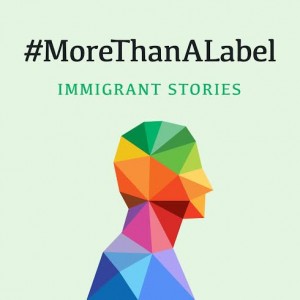It’s Deja Vu All Over Again: State Department Moves Filing Dates Back From Previously Released October Visa Bulletin
On September 24, 2015, the Department of State issued an update that supersedes the previously released October Visa Bulletin. By moving many filing dates back, the update radically changed the recently announced benefit offered by a revised procedure for determining immigrant visa availability and filing adjustment of status applications. The revised process allows foreign nationals to file adjustment of status applications in the United States or visa applications overseas once their filing dates are listed on a separate chart on the monthly Visa Bulletin, “Dates for Filing Applications.” In the prior version of the October Visa Bulletin, these dates were significantly earlier than the priority dates available for final adjudications that would result in green cards. The filing of an adjustment application affords significant benefits such as work authorization, travel permission, the ability to exercise job mobility as well as the ability to protect the age of a child under the Child Status Protection Act.
With the latest change for October, the Department of State moved the dates back substantially. In a statement announcing the change, U.S. Citizenship and Immigration Services explained that following consultations with the Department of Homeland Security, the dates for filing applications for some categories in the family-sponsored and employment-based preferences were adjusted “to better reflect a timeframe justifying immediate action in the application process.” Potentially thousands of applicants who had already gathered documents, prepared applications, paid for medical examinations, and incurred other costs based on the previous dates may have to wait many months for their filing dates to be current enough so they can file, unless the situation changes. Advocates are vowing to pursue possible avenues to make that happen.
As a background, INA 245(a)(3) only allows for the filing of an I-485 adjustment of status application when “an immigrant visa is immediately available.” Visa availability will no longer be defined by when visas are actually available. Both versions of the October Visa Bulletin now view it more broadly as “dates for filing visa applications within a time frame justifying immediate action in the application process.” The USCIS similarly views visa availability opaquely as “eligible applicants” who “are able to take one of the final steps in the process of becoming U.S. permanent residents.” These new interpretations provide more flexibility for the State Department to move the filing date even further, and make it closer to current.
As proposed in a 2014 blog, visa availability ought to be based on just one visa being saved in the backlogged preference category, such as the India EB-3, like the proverbial Thanksgiving turkey. Just like one turkey every Thanksgiving day is pardoned by the President and not consumed, similarly one visa can also be left intact rather than consumed by the foreign national beneficiary. So long as there is one visa kept available, it would provide the legal basis for an I-485 filing through the earlier filing date, and this would be consistent with INA §245(a)(3). Filing dates could potentially advance and become current. Therefore, there was no legal basis to retrogress the priority dates. Rather the government could have advanced them.
It is not clear what the government’s motivation was to move the dates backwards when there was no legal need to do so. Was it that the USCIS could not have been able to cope with the increase in adjustment filings or was it something more sinister such as USCIS or DOS officials with anti-immigrant tendencies gaining the upper hand and deciding not to grant benefits so easily to those caught in the crushing backlogs? Litigation options are potentially available. under the Administrative Procedure Act on the grounds that the government acted arbitrarily and capriciously. During the July 2007 visa bulletin fiasco, when the American Immigration Council’s Legal Action Center threatened litigation after it rescinded the bulletin that made EB dates current, the government backed down. Any litigation strategy must ensure that the dual date system remains intact as a court could well resolve the issue by voiding the filing dates and restoring only one priority date as before.
Below are a few examples of the extreme changes in the revised October Visa Bulletin:
- EB2 China: Moved from 5/1/2014 to 1/1/2013 (1 year 5 months)
- EB2 India: Moved from 7/1/2011 to 7/1/2009 (2 years)
- EB3 Philippines: Moved from 1/1/2015 to 1/1/2010 (5 years)
- FB1 Mexico: Moved from 7/1/1995 to 4/1/1995 (3 months)
- FB3 Mexico: Moved from 10/1/1996 to 5/1/1995 (1 year 5 months)
The very least that the DOS and the USCIS should do is to allow a 30 day period for people who could have previously filed on October 1 to be able to do so. One saving grace is that even the revised October Visa Bulletin preserves the dual filing system, and thus there is flexibility in determining visa availability for purposes of establishing more advantageous filing dates in the future. In addition to litigation, consider pursuing other forms of advocacy. During the July 2007 visa bulletin fiasco, thousands of would be applicants sent roses Gandhi-style to the USCIS as a sign of peaceful protest. People should also sign this White House petition in order to get the requisite number of signatures so that it may be considered by the President. In the words attributed to Yogi Berra who died recently, “It’s Deja Vu All Over Again.” Of course, one will experience a more pleasant sense of deja vu if the government restores the earlier filing dates in the October 2015 visa bulletin like it did with the July 2007 visa bulletin.






